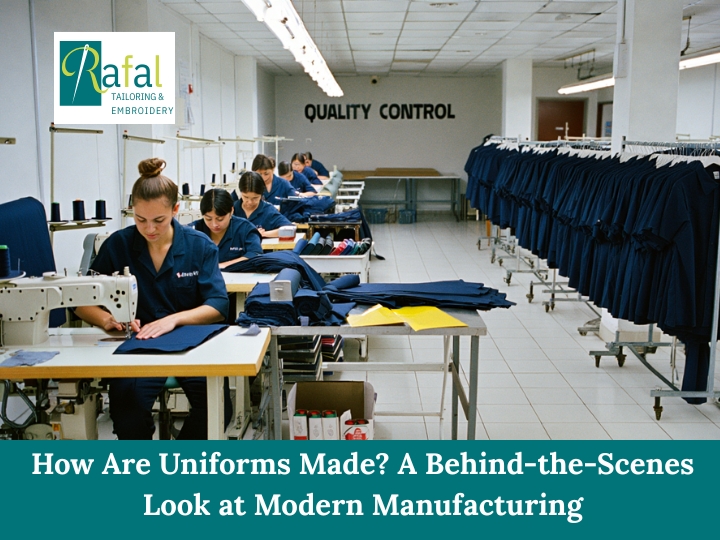How Are Uniforms Made? A Behind-the-Scenes Look at Modern Manufacturing
Uniforms are more than just matching outfits—they are essential tools for brand identity, safety, comfort, and professionalism. Whether it’s for hospitality staff, healthcare workers, or industrial teams, uniform manufacturing is a detailed and strategic process that combines design, engineering, and technology.
In this comprehensive guide, we’ll explore how uniforms are made today—from concept to completion—and what makes a uniform manufacturer reliable in a competitive, quality-driven industry.
1. Understanding the Role of a Uniform Manufacturer
A uniform manufacturer doesn’t just stitch garments—they plan, design, source materials, apply compliance standards, and ensure scalability for bulk orders. Their job starts with understanding the client's industry (hospitality, healthcare, construction, education, etc.), performance requirements, and branding goals.
2. Design & Concept Development
-
Client Consultation: What type of uniform is needed?
-
Sketches & Digital Mockups: Designs must align with both utility and brand aesthetics.
-
Fabric and Trim Selection: Breathable, durable, stretchable, and easy-to-maintain materials are prioritized.
Uniform manufacturers often work closely with graphic designers, fashion technologists, and branding teams to ensure the final product meets functional and visual expectations.
3. Pattern Making & Prototyping
Once the designs are approved:
-
Patterns are drafted digitally (CAD software is common).
-
Samples or prototypes are created.
-
Fit and functionality are tested—especially important in sectors like medical or industrial workwear where movement and protection are critical.
4. Material Sourcing & Compliance
Uniform manufacturers select materials that meet safety and durability standards:
-
Flame-retardant fabrics for industrial use
-
Anti-bacterial, moisture-wicking textiles for healthcare
-
Eco-friendly, recycled fabrics for sustainable businesses
Compliance with ISO or regional certifications is essential for manufacturing credibility.
5. Cutting, Stitching, and Assembly
High-precision machines cut fabric to reduce waste and increase accuracy. The stitching phase includes:
-
Reinforced seams for durability
-
Embroidery or printed branding (logo, employee names, etc.)
-
Functional features: pockets, zippers, reflective strips
Large-scale manufacturers streamline this with automation to handle high-volume uniform production efficiently.
6. Quality Control & Testing
Before uniforms are shipped:
-
Every batch undergoes quality checks for stitching, sizing, and finishing.
-
In some cases, manufacturers test washability, colorfastness, and wear resistance.
This ensures that the final product aligns with the company's promise of quality and longevity.
7. Packaging and Delivery
Uniforms are folded, labeled, packed according to size sets or departments, and shipped. Reliable uniform manufacturers also offer tracking, reordering support, and flexible bulk solutions.
8. Why Partnering with a Skilled Uniform Manufacturer Matters
Choosing the right manufacturer ensures:
-
Long-term cost savings
-
Brand consistency
-
Compliance with industry-specific requirements
-
Employee comfort and satisfaction
Businesses in the UAE, India, and beyond often look for manufacturers who not only deliver bulk orders but also offer customization, fast lead times, and sustainability practices.
Final Thoughts
Modern uniform manufacturing blends traditional tailoring with smart production processes and cutting-edge technology. Whether you need uniforms for 20 staff or 2,000, understanding how uniforms are made helps you choose a manufacturer who aligns with your brand, budget, and industry needs.




Comments
Post a Comment